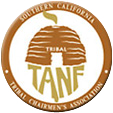George Circling Eagle Tooks [African-Apache] interviewed William Loren Katz on his updated and expanded 2012 edition of “Black Indians: A Hidden Heritage”
Tooks: Since many people already have your book, what led you to write this new 2012 edition?
Katz: Since the new edition was 30% larger it allowed me to include important figures and events that did not appear into the original 199 pages, and bring the story up to the present.
Tooks: Why do you cover the Pope Revolt of 1680?
Katz: I found evidence this famous uprising that drove out Spain’s soldiers for a dozen years was really a revolution led and engineered by Native Americans and Africans.
Tooks: Why did you include Lucy Gonzales Parsons?
Katz: A former Texas slave of African, Hispanic and Native American descent, and a self-educated woman, she came to Chicago in the 1870s where she became a forceful advocate of trade unions and world socialism. She organized working women, addressed union meetings in the United States and England, and her writings and lectures made her internationally known as the first woman of color socialist revolutionary. She told audiences her people considered European capitalism and private property as foreign ideas.
Tooks: How was she received?
Katz: Urging workers, the poor and minorities to replace capitalism with a workers’ state, Infuriated the wealthy and often landed her in jail. But she kept at it until she died at 89.
Took: Didn’t she suggest the idea of nonviolent resistance?
Katz: Long before Mahatma Ghandi or Martin Luther King, Jr., she urged the Industrial Workers of the World founding convention in Chicago in 1905 not to go out on strike but “stay in and take control of the means of production.” This would peacefully keep bosses from bringing in scab labor. Her nonviolent strike idea was later shaped into “nonviolent resistance” advocated by Ghandi, King, anti-war and other US protestors, and the Arab Spring.
Tooks: Why do you focus on George Henry White?
Katz: White was a former North Carolina slave of African and Indian descent who was twice elected to Congress in the late 19th century. He spoke as the only person of color in Congress from 1897-1901, and the last former slave in Congress. He introduced the first federal anti-lynching bill, and daringly imposed the death penalty for those convicted.
Tooks: What happened to his bill and Congressman White?
Katz: His bill was buried and never came to a vote, his white House colleagues tried to ignore him, and North Carolina passed laws to prevent him or any African or Indian from being elected to Congress. But White continued his brilliant and prophetic speeches denouncing American racism.
Tooks: Does the new edition carry the Black Indians story into the present?
Katz: Yes, its many more pages allow me to deal with the American Indian Movement and tell how militant Indians joined and were inspired by Dr. King and his Poor People’s March, and particularly Malcolm X and the Black Power Movement. The book discusses contributions to the African and Indian dialogue by Dr. King, Leonard Peltier, Mumia Abu Jamal, Kwami Toure, Louis Farrakhan, Dr. Jack D. Forbes and Vina Deloria, and cites significant differences.
Tooks: Clearly, this knowledge and your more than two dozen additional photographs make this a very new book.





